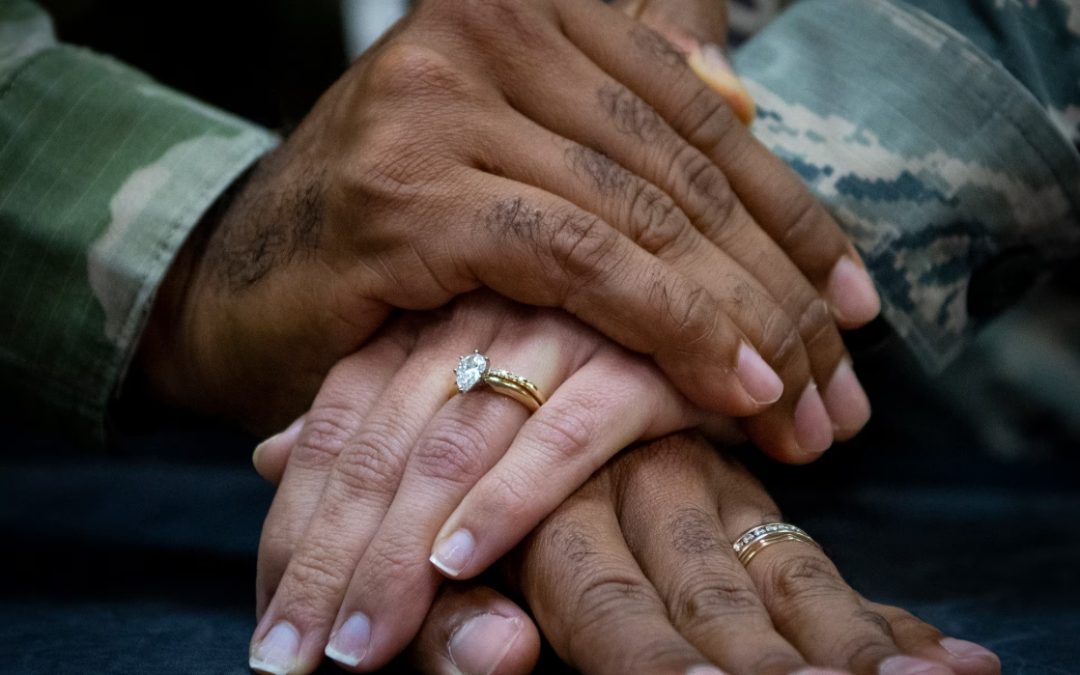61% of the Air Force is married! This puts the Air Force at the highest rate of married service members in the armed forces. According to the DoD, about 50% of all service members are married.
Unfortunately, these marriage rates come with high divorce rates- higher than any civilian profession. They also have higher rates of intimate partner violence. Service members experience unique challenges like deployment, geographic instability, and combat situations that may contribute to these high divorce and domestic violence rates.
Unhappy marriages can negatively impact DEOCS scores, lead to unhappy service members, low morale, and decreased retention overall. Unhappy spouses even affect service member retention: research suggests that the happier the spouse of a military member is, the higher the retention rate of the service member. High retention is more important now than ever, as our military anticipates the potential for large-scale combat operations in the Indo-Pacific and monitors the conflict between Russia and Ukraine.
Read more: how integrated prevention officers are leveraging PDP
Top Questions to Enhance Military Marriages
Here are some questions you can use to enhance your service members’ marriages and, in turn, retention—whether you’re a chaplain, integrated prevention leader, or squadron leader. We’ve developed these three questions for the program level, but you can adjust them to shape your approach to mentoring others and support your own relationship.
- The better prepared a spouse is for deployment, the easier the transition. What kinds of interventions could help couples prepare for and cope with a long-term separation?
- When military couples’ established family roles change after a reunion, the likelihood of divorce increases. After a reunion from deployment, how can you help mentor couples adjust to these role changes and grow together, not apart?
- Studies have shown that joint premarital counseling is more effective than no counseling at all (even if individuals were unsatisfied with the counseling!). If individuals were very satisfied with their joint premarital counseling, then premarital counseling was much more effective than no counseling. What support structures are in place for couples or service members considering tying the knot? How available and accessible are they?
PDP: Enhancing Military Marriages
If you want another tool to help increase retention and satisfaction through service members’ marriages, consider mentoring through PDP. This behavioral assessment system includes a side-by-side comparison option, where you can compare partners’ behavioral profiles. The comparison can provide the foundation for an effective premarital or marital mentoring session, helping service members and their spouses identify differences that may lead to problems and helping them better understand each other using evidence-based assessments.
“My husband and I did a PDP session with Maj Mach; I had noticed that we were fighting a lot more than usual. I figured it was because my husband was leaving on a year-long deployment. After hearing so much about the PDP and how my communication had already improved with my co-workers I decided to ask my husband if he would be willing to do a mentoring session with me. He hadn’t ever gone through a mentor session and didn’t understand why I was always bragging that it was a great thing. My husband learned a lot about himself and about our relationship, also what his stressors were. We were able to sit down and talk about things in a calm manor that were going on with finances, his deployment, and things going wrong with our house. Don’t get me wrong we still have our tiffs here and there but we aren’t yelling and screaming at one another any more. We are able to use our phrases that work with our high trait and get a better response from one another.’
-Military Spouse on PDP
If you’re interested in seeing a PDP side-by-side for marriage mentoring, click here to see our demo video.
Conclusion
Remember, the old adage ‘happy wife, happy life’ applies to more than just married people. Everyone, including Uncle Sam, benefits from strong marriages.





